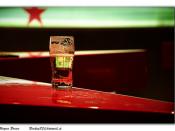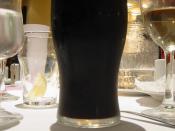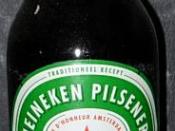Problem Statement: As the consumer needs & tastes vary across the globe, Heineken must decide how much to adept their marketing strategy to local needs using a variance of standardized marketing mix & adapted marketing mix, owing to the strong brand preferences & loyalties that exist among the beer drinkers.
Analysis: Heineken's position in the beer market is consolidated by its strong history, making it the number two beer brewer in the world, thus accounting for nearly 5% of the worlds production. With a major global presence, Heineken's main market is Europe, accounting for 47% of its sales. Some of the other brands include Amstel, Buckler, Murphy's Stout & Bir Bintang, each of these being targeted at different levels across the world.
Heineken's premium quality & taste was attributed towards five core brand values: taste, premiumness, tradition, winning sprit & friendship. Heineken's "good taste" brand image advertising can be evaluated on the basis of desirability, exclusiveness & believability.
These attributes can be measured on the basis of the evolving market structure, beginning at the embryonic stage (eg: Africa) and continuing to the declining stage (eg: USA), thereby creating a platform for laying down the market objectives. Also the relationship between the product-trial rate and the customer awareness level will remain to be the deciding factor on reach, frequency & impact of the advertising campaign (refer chart 2). A communication- effect research would elaborate the depth of penetration in the high volume-price sensitive, fragmented & segmented markets (eg: Italy, Spain, Japan, North/Central Europe, Australia & USA). With the acquisition of domestic brands, Heineken N.V. can explore the adaptation mix along with the promotion of its mainstream product - Heineken. For example, in Ireland & the UK, which boast a high per capita beer consumption (123 litres &103 litres respectively, refer...



Quick
attach a bibliography quickley before John reads this
5 out of 5 people found this comment useful.